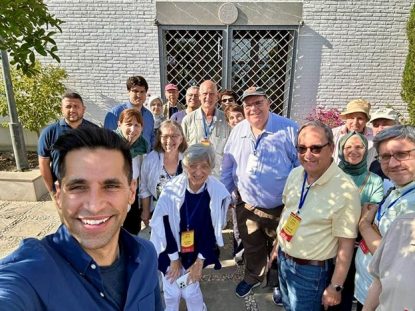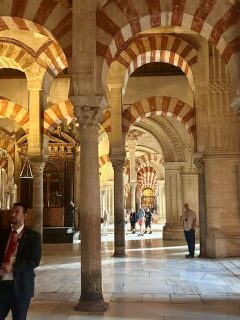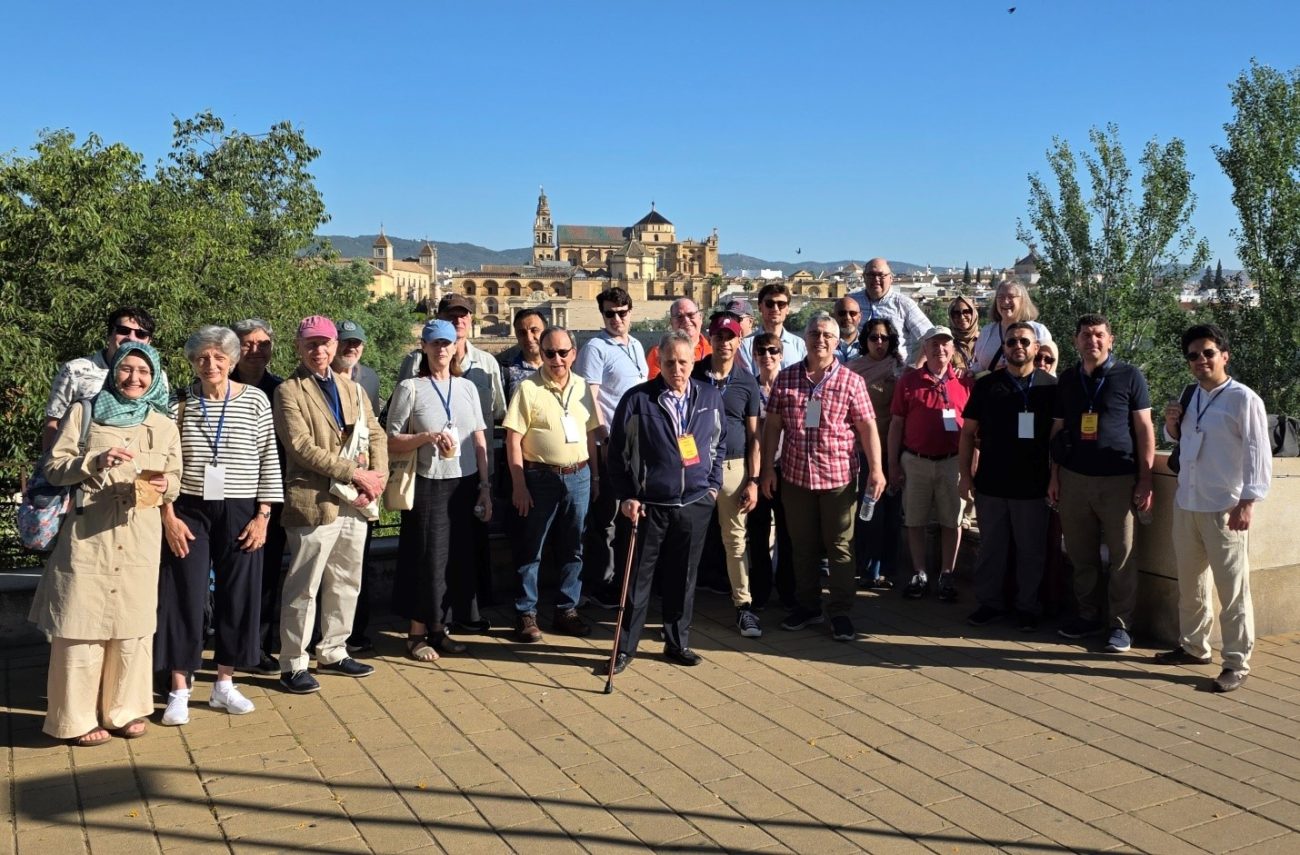“One culture, three religions” was a phrase frequently heard during an interfaith pilgrimage May 19-26 to the Andalusia region of Spain. A group of 14 Muslims, eight Jews and five Christians traveled together, learning as much from each other as we did about the rich history of southern Spain.
The pilgrimage was cosponsored by Peace Islands Pennsylvania and New York and the National Council of Synagogues.

The interfaith group visiting a Mosque in Granada. (Photo: Msgr. Fairbanks)
We concentrated on the medieval period of Spanish history, between 711 and 1492. Different people remember this period of history in different ways. The three religions lived and worked together yet also fought against one another.
Modern Spanish historians refer to this period as La Convivencia (Spanish for “living together”), a time when Christians, Muslims, and Jews lived together in peace in Medieval Iberia (modern Spain and Portugal).
These historians hope that this reading of history will unite the different regions (there are independence movements in several parts of the country). Historians also hope for peaceful coexistence in an increasingly diverse Spain, which is now increasingly secular. Although culturally Catholic, four percent of Spaniards are Muslim and a small Jewish population is also present, along with several other religious minorities.
We visited Madrid, Toledo, Córdoba, Seville, and Granada. In Córdoba we visited the famous Mosque-Cathedral, a unique piece of architecture and history. The site was home to an ancient Visigoth church, the Catholic Basilica of Vincent of Saragossa. A Mosque replaced the church in 785 and saw additions until its completion in 971.
In 1236 Christian forces recaptured Córdoba, and the mosque structure was dedicated as a cathedral. In the 16th century another cathedral was built inside the rich structure, becoming a cathedral inside a cathedral.
In Seville we visited the Church of Santa María la Blanca, which transitioned from a church to a mosque, then a synagogue, and later to a church. Remnants of all periods are preserved.
We met with local faith leaders who explained the interfaith relations in Spain, and the sincere efforts to welcome and accommodate persons of different faith traditions.

Inside the Mosque – Cathedral of Córdoba. (Photo: Msgr. Fairbanks)
Throughout the pilgrimage, we witnessed a culture formed by three distinct yet interrelated religions. These three religions share a common history, trace their origins to the patriarch Abraham and are often seen as originating from a single cultural and religious tradition within the Middle East.
The three faiths coexisted together for nearly eight centuries, each leaving a distinct mark on Spanish culture and identity. Our goal as pilgrims was to learn from the past, experience the richness of each, and appreciate the good in each other as we face the future together.
We hope this experience will be the beginning of a deepening of relationships and understanding. We experienced the facts of history together, trying to see each other’s perspectives, and move forward with mutual respect.
We have far more in common than divides us. May we have the courage to achieve La Convivencia in peace.
***
Msgr. Gregory J. Fairbanks serves as Dean of the School of Diaconal Formation and professor of Church History at St. Charles Borromeo Seminary in Lower Gwynedd.
PREVIOUS: Goodness, Truth, Beauty Remain Amid Year of Changes at Seminary
NEXT: Catholic Teachers Make Pilgrimage of Courage for Racial Healing




Share this story